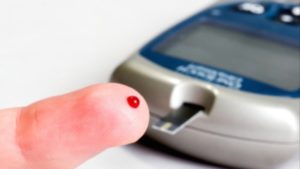 There are several weight loss plans that push for the dominance of fat and protein over the other macronutrients called carbs or carbohydrates. This is what happens with Paleo, South Beach, Atkins and other simple low carb diets. A person can lower the carbohydrate intake to meet a certain weight goal, but this leads to some negative and positive side effects.
There are several weight loss plans that push for the dominance of fat and protein over the other macronutrients called carbs or carbohydrates. This is what happens with Paleo, South Beach, Atkins and other simple low carb diets. A person can lower the carbohydrate intake to meet a certain weight goal, but this leads to some negative and positive side effects.
But a large number of dieticians are now saying that avoiding all the carbohydrates is not a real safe dietary resolution. However, living without sugar and other forms of carbohydrates is possible.
“Carbs” is the term that those who want to lose weight are really trying to avoid. According to Dr. Robert Atkins, this is bad, which left numerous people puzzled about carbohydrates and their significance to their health. Importantly in attaining and maintaining a healthy body weight, they matter.
Carbs represent a broad class of food and we need to learn that not all of them have a similar effect with respect to diabetes. The focus should be on the kind and amount of carbs in our daily diet. Although it is suggested that we must lessen the quantity of sugar in our diet, we should also limit starchy carbs. These claims are supported by Sian Porter, a dietician, who adds that there is a strong belief that the fibers present in whole grain versions of starchy carbs are definitely good for everyone’s health.
Protein and carbohydrates contain approximately a similar amount of calories in every gram. But fat has roughly twice as many calories for each gram as protein or carbs. However, there are other factors that influence the satiety or the sensation of feeling full. It depends on the kind and quantity of food eaten. Also, environmental factors like availability and portion size are also crucial. Satiety varies from one person to another.
Foods that are high in protein help a person feel fuller and these include eggs, fish, beans, dairy products and meat. An individual should avoid overeating protein to have a healthy balanced diet. Make sure you include some starchy foods such as vegetables and fruits in your diet.
The body prefers to use carbs as energy for the metabolism, muscles and nervous system. When a person eats carbohydrates, the body breaks it down into smaller sugar units. These will be transported through the bloodstream to the organs and tissues, where these are put to use as energy. One of the sugars that carbs break down into is called glucose. This element is vital to the central nervous system.
The human body can use protein for energy, but this process will increase stress on the kidneys because the byproducts will be excreted into urine.
When you cut your consumption of carbohydrates, your body will benefit in terms of weight loss. In 2014 the Nutrition, Metabolism and Cardiovascular Disease published a report stating that low carb diets can reduce the body weight and lower the risk factors for any cardiovascular disease. But, eliminating carbs completely will cause problems to the body’s biological functions. To make it easier for you to have all the nutrients in your diet and lose weight without putting your health in jeopardy, check the 7 steps to health guidebook.
The Iowa State University Extension released a statement that without glucose, an individual might feel dizzy and weak. This can also lead to hypoglycemia or low blood sugar. In some occasions, a person might experience poor physical performance as well as mental fatigue.
It is highly suggested by the Dietary Guidelines for Americans for people to eat at least 45 to 65% of their calories from carbs. If you are following a 2,000 calorie diet, this is equal to 225 to 325 grams of carbohydrates daily. This is because every gram of carbs is equal to 4 calories.
On the other hand a study by The Journal of Clinical Endocrinology and Metabolism reported in 2003 that women who are consuming as little as 20 grams of carbs daily lose more weight compared to those who are having low-fat diets. But this only leads to short term results. Having such small quantity of carbohydrates over a period of half a year is not related to the increase in cardiovascular risks.
You can get rid of simple carbs such as sugar without experiencing harmful effects while still eating complex carbs in the form of whole grains or vegetables.
If you want to go for a low carb diet, stay away from simple carbohydrates like lactose and sucrose. These types of carbs break down swiftly and are absorbed into the bloodstream immediately. They provide a source of energy that can only last momentarily.
However, the complex carbohydrates take a longer time to digest. These will gradually increase blood glucose and provide a longer lasting kind of energy. If you have the luxury to choose, pick fiber-rich options like vegetables and whole grains. This includes carrots, leafy greens and celery.
There is a healthy way to hack simple carbohydrates in your diet. Work on cutting your added sugar intake. Spend some time to read ingredient labels and take note if a form of sugar is close to the top of the list. Other added sugars are hidden in the names of dried cane syrup, brown rice syrup, high fructose corn syrup, maple syrup, invert sugar, sucrose, and molasses.
